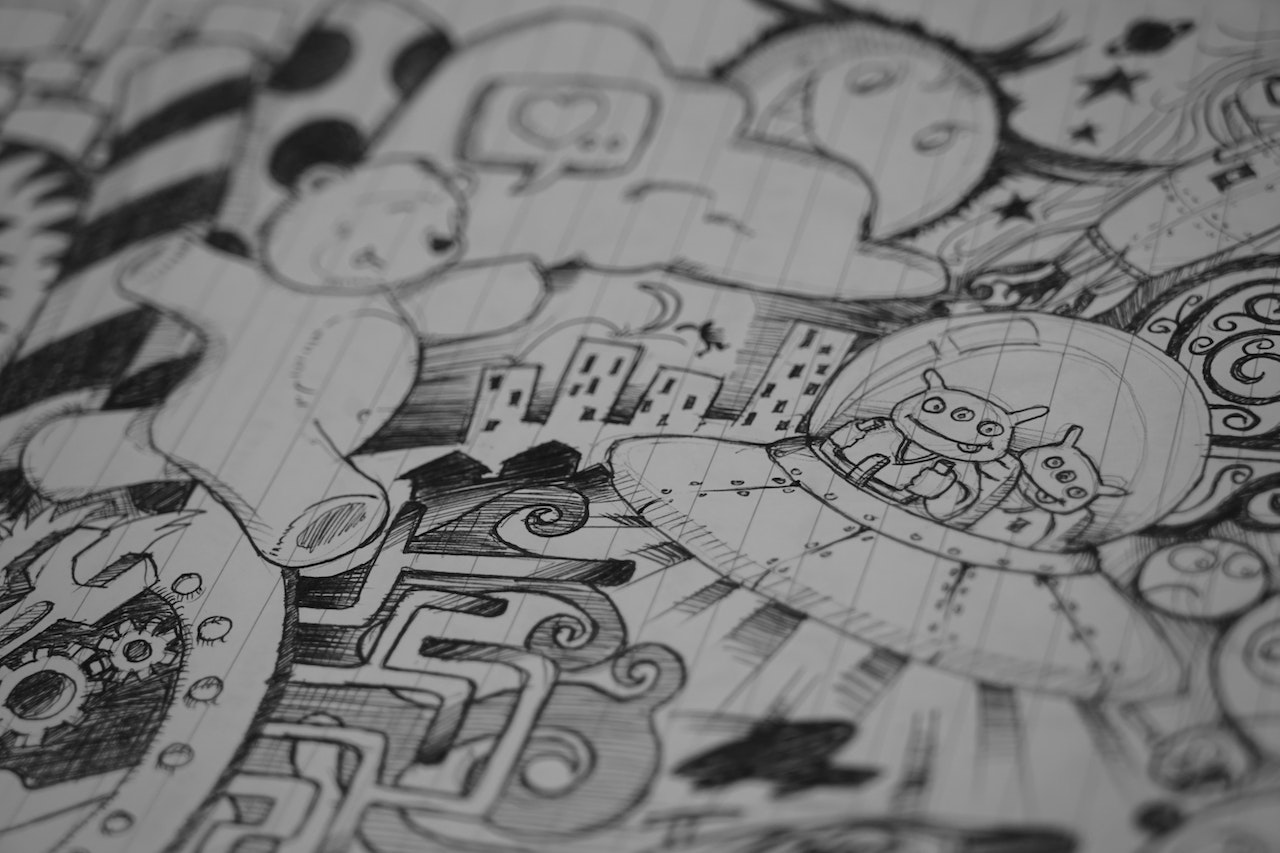The Evolution of a Cartoonish Art Style

One cannot deny the powerful impact of cartoonish art style in popular culture. Historically, cartoons have been seen as a medium primarily aimed at children, but their influence has transcended age boundaries and captivated audiences of all backgrounds. From the whimsical characters of Disney animations to the satirical world of political cartoons, this art style has proven its versatility and ability to communicate complex ideas in a visually engaging manner. We have witnessed a resurgence of cartoonish art style with the rise of animated television shows such as Rick and Morty and Adventure Time. These shows push the boundaries of traditional animation by incorporating mature themes alongside their colorful visuals. This blending of childlike aesthetics with thought-provoking content challenges our perception that cartoons are only meant for entertainment and opens up new avenues for storytelling.
Social media platforms have also played a significant role in popularizing cartoonish art styles. Memes, which often rely on simplified illustrations to convey humor or commentary, have become an integral part of online culture. The accessibility and relatability of these images allow internet users to engage with them on a personal level while creating a sense of community through shared experiences. Cartoonish art style will continue to evolve and shape popular culture as it adapts to contemporary trends and advancements in technology.
Influences and early examples

The origins of the cartoonish art style can be traced back to the early 20th century when animation was just starting to gain popularity. One of the earliest examples of this style can be seen in the work of Winsor McCay, an American cartoonist and animator. McCay’s iconic character, Little Nemo, showcased exaggerated features and expressive movements that would later become hallmarks of the cartoonish art style. Another influential figure in the development of this art style was Walt Disney. With his creation of Mickey Mouse in 1928, Disney revolutionized animation by introducing a lovable and comical character that captured audiences worldwide. Mickey Mouse’s round face, big eyes, and exaggerated gestures became instantly recognizable symbols of the cartoonish art style. Disney’s innovative storytelling techniques and attention to detail further solidified his influence on the genre.
These early examples highlight how artists like Winsor McCay and Walt Disney laid the foundation for what would become a vibrant and enduring art form. Through their creative vision and groundbreaking techniques, they shaped not only the way we perceive cartoons but also inspired generations of artists who continue to push boundaries within this distinctively animated world.
Iconic cartoonish art styles today
Contemporary cartoonish art styles have evolved over time to become iconic representations of popular culture. One notable example is the art style seen in animated television shows such as Adventure Time and Steven Universe. These shows embrace a whimsical and colorful aesthetic, with exaggerated proportions and dynamic character designs. The use of bold lines and vibrant colors creates a visually striking appeal that captures the attention of viewers of all ages. Another example of a contemporary iconic cartoonish art style can be found in the works of Japanese artist Takashi Murakami. Murakami’s distinctive superflat style combines elements from traditional Japanese art with contemporary pop culture icons. His characters often feature bright, anime-inspired features, creating a sense of playfulness and fun. This combination has made his artwork instantly recognizable and highly sought after by collectors around the world.
Contemporary examples like Adventure Time, Steven Universe, and Takashi Murakami’s artwork demonstrate how cartoonish art styles continue to evolve and captivate audiences today. Through their unique aesthetics and imaginative designs, these artists are able to create lasting impressions on viewers while bringing characters to life in new and exciting ways. These iconic styles serve as a testament to the power of cartoons as an enduring form of artistic expression in modern society.
Potential directions for the art form
As the art form of cartoonish styles continues to evolve, there are countless possibilities for its future direction. One potential avenue is the expansion of animation techniques and technology. With advancements in computer graphics and virtual reality, we may see a blending of traditional 2D cartoon elements with immersive 3D environments, creating a truly interactive artistic experience. Another intriguing direction for the art form is the exploration of new cultural influences and global perspectives. As globalization continues to connect people from different backgrounds, artists have an opportunity to fuse various cartoonish styles and create innovative cross-cultural works. This could result in mashups of Eastern anime-like character designs with Western comic strip narratives or even reinterpretations of classic characters through diverse lenses.
As society becomes more aware of issues such as environmental conservation and social justice, it is likely that these themes will find their way into cartoonish art styles. Artists may use clever visuals and satire to creatively highlight these topics, making them accessible and engaging for viewers across all age groups. The future possibilities for cartoonish art styles are limitless – from pushing technological boundaries to exploring new narratives inspired by global cultures or addressing important world issues. Exciting times are ahead for this beloved medium as creators continue to expand their horizons with their imagination and innovation.
The enduring appeal of cartoonish art

The enduring appeal of cartoonish art lies in its ability to connect with people on a universal level. The exaggerated features and simplified forms allow viewers to instantly recognize and relate to the characters and stories depicted. Cartoonish art has the power to transcend language barriers, cultural differences, and even age groups. Cartoonish art can often serve as a vehicle for social commentary and satire. Through playful exaggeration, artists are able to highlight societal issues or criticize political figures in a way that is both entertaining and thought-provoking. This ability to mix levity with important messages adds an extra layer of depth to cartoonish art, captivating audiences while also subtly conveying deeper meanings.
The enduring appeal of cartoonish art can be attributed to its ability to evoke emotions in viewers. Whether it’s through humor or nostalgia, this style of artwork has a knack for capturing our attention and evoking feelings of joy, sentimentality, or even unease. By tapping into these emotional responses, cartoonish art continues to captivate audiences across generations and remains relevant in an ever-evolving artistic landscape.



